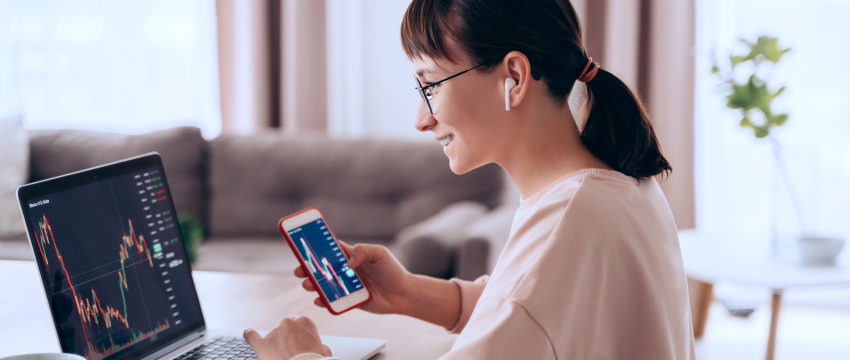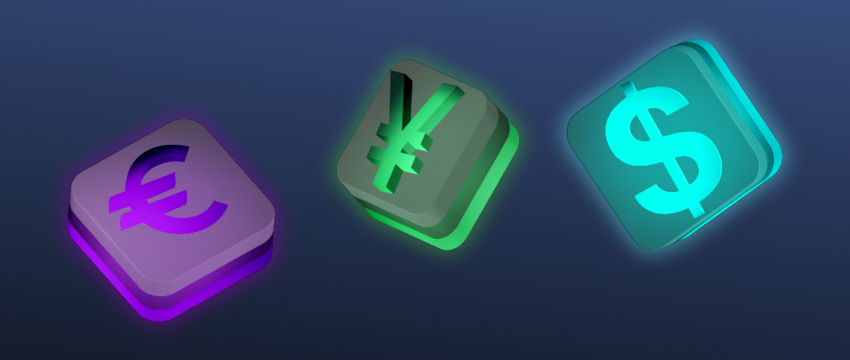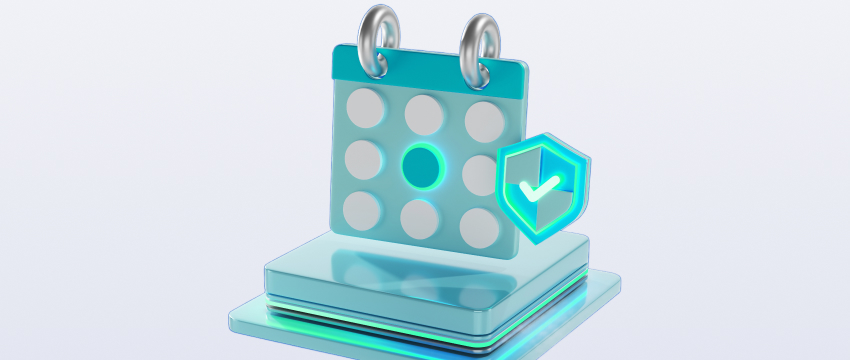Because the forex trading market is so large, learning about it can feel a bit daunting. With over $7.5 million traded every day by numerous traders and institutions, there is a great potential to generate revenue. However, there are also risks involved.
That’s why it’s important for new traders to know that forex isn’t just guessing when to buy or sell a currency. The prices of currencies move for many reasons including changes in the economy, political events and how confident or worried traders are. All of the above can have an impact on your trading decisions.
In this article, we’ll make forex trading easier to understand and help you build a strong foundation. You’ll start by learning the basics, exploring the different types of markets and following a clear, step-by-step plan.
About trading in the FX market
As discussed above, the foreign exchange market is the world’s largest financial market. It is where people exchange one currency for another, and it all happens online, as there’s no central location.
Instead, traders connect through global networks using trading platforms. This makes it a 24-hour market from Monday to Friday, moving across time zones from Asia to Europe and then to North America.
Only big banks, financial institutions and wealthy investors could access the forex market in the past. Nowadays, however, with the rise of online trading, individual traders can participate too. In fact, anyone with an internet connection can buy and sell currencies from anywhere around the globe.
Forex trading involves buying one currency while selling another. Traders try to speculate on how currencies will change in value. For instance, if you believe the euro will rise compared to the US dollar, you buy euros and sell dollars.
Then you sell them back later at a higher price to generate revenue. Trading forex is also used for hedging, which helps businesses protect themselves against losses from currency movements.
The FX market is highly liquid, which means it’s easy to invest without affecting prices a lot. Traders can also use leverage, which allows them to control large positions with a small amount of money. However, leverage may lead to losses too. This is why managing risk is important, especially for beginner traders.

Steps to start trading forex for beginners
Getting started with forex trading might seem confusing at first, but with the right steps, you can learn how to trade with confidence. Here’s a straightforward guide to help you start trading in the forex market as a beginner.
1. Learn the basics of forex trading
Before you get into forex trading, take time to understand how the market works. Learn about key terms, including currency pairs, pips, spreads, leverage and margin.
It’s equally important to know what influences currency prices, like interest rates, inflation, news events and global economic conditions. Being familiar with how the market works will help you make smarter decisions and manage risks.
2. Choose a trusted broker
Your broker is your main access point to the FX market. Therefore, it’s important to pick a reliable one. Look for a forex broker that offers a user-friendly platform and provides useful tools and educational resources.
Additionally, check their fees, available markets and currency pairs and customer support, to make sure they match your trading needs.
3. Open a forex trading account
Once you choose your CFD broker, the next step is to open a trading account. If you are new, start with a demo account.
This will allow you to practise with virtual funds so you can get used to the platform and test your strategy without risking real funds.
4. Understand the different options
Most brokers usually offer trading through CFDs (Contracts for difference). CFDs allow you to trade currency price movements without actually owning the currency.
Make sure you understand how CFD trading works and the risks involved.
5. Create your forex trading plan
A trading plan helps keep your trading focused and disciplined. It should include your goals, risk tolerance and strategy. Decide how much you’re willing to risk per transaction, and outline when you’ll enter and exit your transactions.
Most importantly, stick to your plan even if you experience losses or the market gets emotional or unpredictable.
6. Choose a currency pair
Start with major currency pairs like EUR/USD or GBP/USD. These pairs are widely traded, meaning they have more liquidity and lower spreads, which can be better for beginner traders. Start with one or two pairs to avoid feeling overwhelmed.
7. Analyse the forex trading market
Before you place a trade, analyse the market using different methods. Technical analysis involves looking at charts and price patterns while fundamental analysis considers economic data and news. Some traders also use sentiment analysis to see what traders are thinking.
8. Place your first trade
Once you’ve researched enough and done your analysis, you can decide to go long (buy) or short (sell) a currency pair.
Use trading tools like stop-loss and take-profit orders to manage your risk. Start small and only invest what you can afford to lose.
9. Monitor your trades
After placing your trade, you should keep an eye on it. The market can move quickly, so be ready to make changes where necessary.
Stay updated with market news and events that might influence your trades. Managing your transactions actively is an important part of successful forex trading.
10. Learn from your results
Whether your investment was successful or not, take time to review what happened. Keep a trading journal where you record your trades, what you did right and what you could improve.
As time passes, this will help you refine your strategy and become a better trader.
11. Manage your risks
Forex trading involves risk, so it is essential that you have a solid risk management plan in place. Only risk a small portion of your account on each trade. This will help protect your capital and support long-term success.

Is forex hard for beginners?
Forex markets move fast, driven by global news, economic reports and central bank actions. Sudden currency swings and leverage can potentially lead to big losses.
Traders must navigate complex market forces, intense psychological pressure or costs from spreads and fees. Therefore, forex is not simple. It does become easier, however if you follow the above steps.
Final thoughts
There are various factors that influence currency prices such as interest rates, inflation, political events and economic news.
Since forex is global, it reflects whatever is happening in economies and governments worldwide. Learning how these elements impact the market helps traders build stronger strategies.
To start with forex trading takes more than just placing trades. It’s of high importance to understand the basics, choose a trustworthy broker and create a plan.
For new to trading, it’s a good idea to start with a demo account to practise before invest with real money. With the right approach, forex investing can offer exciting opportunities. However, always stay informed and be prepared.
Disclaimer: This material is for general informational and educational purposes only and should not be considered investment advice or an investment recommendation. T4Trade is not responsible for any data provided by third parties referenced or hyperlinked in this communication.




